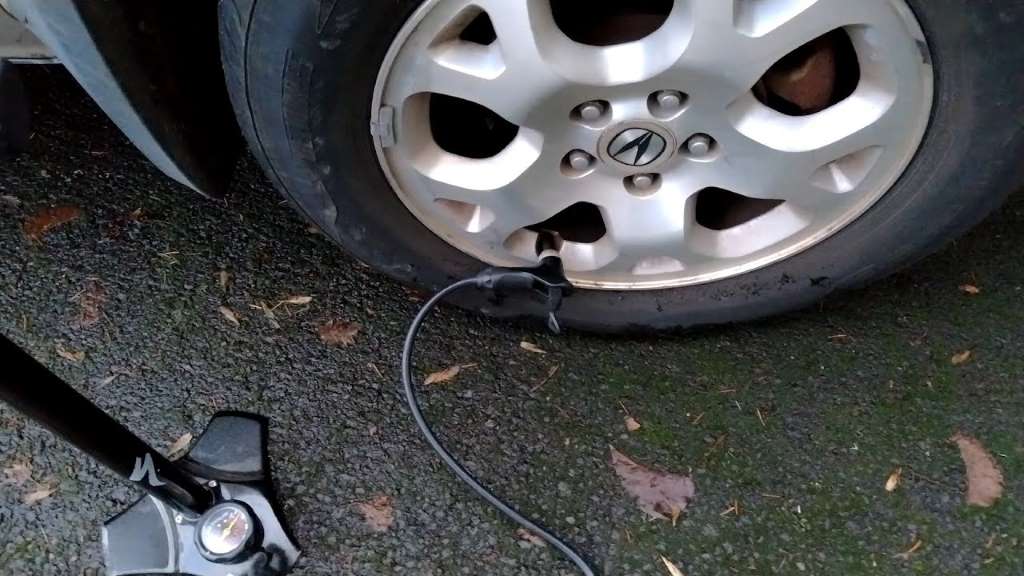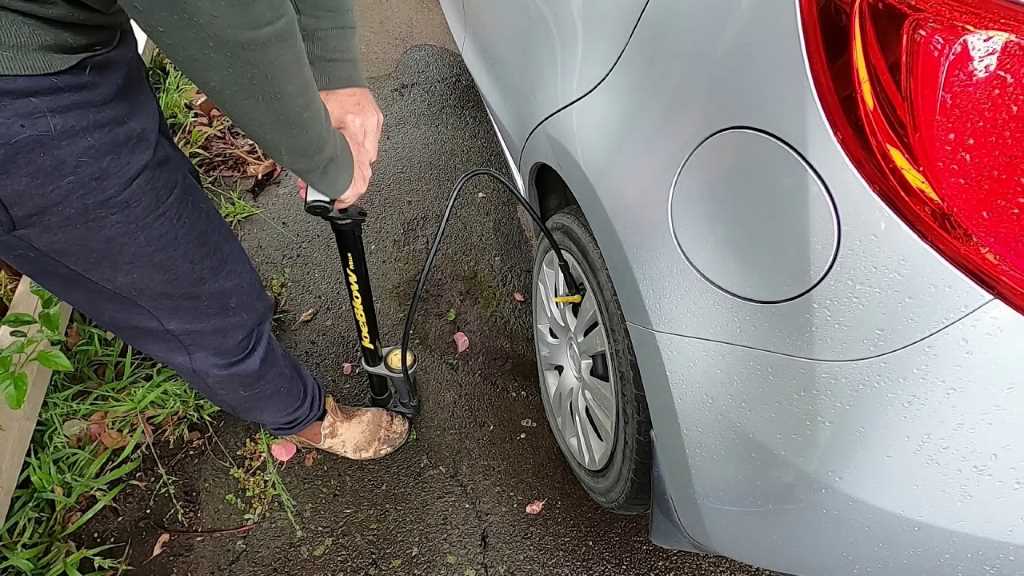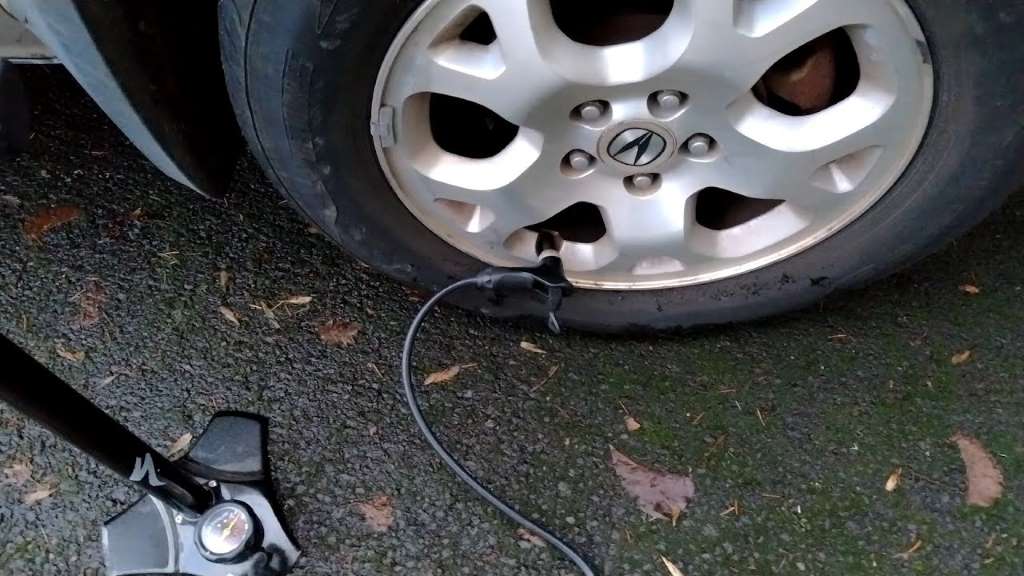Can you inflate a car tire with a bike pump? Let’s follow along with Car From Japan to find the answer!
Have you ever found yourself stranded on the side of the road with a flat car tire, only to discover that the nearest gas station or repair shop is miles away? In such a situation, the availability of a bike pump might seem like a glimmer of hope!
Contents
Can You Inflate a Car Tire with a Bike Pump?
In general, yes, you can inflate your car tire with a bike pump. However, it’s not a practical or efficient solution.
Bike pumps are designed to handle much lower pressures than car tires, and they often lack the necessary volume and power to inflate a car tire to the required pressure in a reasonable amount of time.
Additionally, the small nozzle on a bike pump may not fit securely onto a car tire valve, potentially leading to leaks and slow inflation.
In emergency situations, it’s advisable to use a dedicated car tire inflator or seek assistance from a roadside assistance service.
While a bike pump might be a last resort in a dire situation, it’s important to understand its limitations and choose the most appropriate tool for the job.

What Are The Differences Between Bike Pumps vs. Car Tire Pumps
Pressure Capacity
Bike pumps are typically designed to inflate bicycle tires, which require pressures in the range of 50 to 150 psi. In contrast, car tires require pressures between 30 and 40 psi.
While a bike pump may be able to reach the lower pressure range required for car tires, it may struggle to achieve the desired pressure quickly or efficiently.
The limited pressure output of a bike pump may result in extended pumping times and the potential for underinflation, which can compromise tire safety and performance.
Volume Capacity
The volume of a car tire is significantly larger than that of a bike tire. This means that a bike pump, which is designed to handle smaller volumes of air, may take an excessive amount of time to inflate a car tire.
The smaller volume capacity of a bike pump can lead to fatigue and frustration for the user, especially in emergency situations. Additionally, prolonged pumping can generate heat, which can potentially damage the pump or the tire valve.
Valve Types
Another factor to consider is the compatibility of valve types. Most car tires use Schrader valves, while many bike tires use Presta valves.
While it is possible to use a bike pump with a Schrader valve on a car tire, it may require an adapter to ensure a secure connection.
The use of an adapter can introduce additional complexity and potential points of failure, further limiting the practicality of using a bike pump for car tires.
Here is a comparison table of bike pumps and car tire inflators for your reference.
| Feature | Bike Pump | Car Tire Inflator |
| Pressure Capacity | 50-150 psi | 30-40 psi |
| Volume Capacity | Small | Large |
| Valve Type | Presta or Schrader | Schrader |
| Inflation Speed | Slow | Fast |
| Portability | Highly portable | Moderately portable |
| Efficiency | Less efficient | More efficient |
| Intended Use | Bicycle tires | Car tires |
| Cost | Relatively inexpensive | More expensive |
Safety Considerations When Inflating a Car Tire with a Bike Pump
Now you understand can you inflate a car tire with a bike pump, take note of some safety considerations when using a bike pump on car tires.
Overinflation risks
Overinflating a car tire can pose significant safety risks. Tires that are overinflated are more susceptible to punctures and blowouts, which can lead to accidents and injuries. Overinflation can also cause uneven wear on the tires.
Accurate pressure gauge
To ensure accurate tire inflation, use a reliable pressure gauge. Inaccurate gauges can lead to overinflation or underinflation.
Tire damage
Using a bike pump on a car tire can increase the risk of damage to the tire valve or rim. The smaller nozzle on a bike pump may not fit securely onto the car tire valve, potentially leading to leaks or damage.
Moreover, excessive force or improper handling during inflation can also cause damage to the tire valve (rim).
Physical strain
Inflating a car tire with a bike pump requires significant physical effort, especially for larger tires or when the tire is significantly underinflated. This can lead to fatigue and increase the risk of injury.
Risk of injury
Even with proper tire tools, you may still pose a risk of injury. If the tire suddenly bursts, it can cause serious injuries.
Additionally, improper handling of the pump or tire can lead to cuts, scrapes, or other injuries.

What Are The Alternatives For Bike Pumps
When it comes to inflating car tires, there are several more effective and efficient alternatives. Dedicated car tire inflators are specifically designed to handle the higher pressures and larger volumes required for car tires.
These devices are often powered by batteries, compressed air tanks, or 12V power outlets, providing a convenient and reliable solution for inflating car tires on the go.
Additionally, many gas stations and service stations offer air pumps for public use powered by compressed air.
There are some options you can consider for a tire pump.
| Item | Approximate Price Range | Additional Features |
| Bike pump | $10 – $50 | Pressure gauges, multiple valve adapters, storage cases |
| Car tire inflator | $20 – $100 (portable models) | Pressure gauges, digital displays, LED lights, emergency power banks, built-in air pressure presets |
| 12V car tire inflator | $30 – $80 | Pressure gauges, digital displays, LED lights, automatic shutoff, thermal protection |
| Air compressor (home use) | $50 – $200 | Pressure gauges, digital displays, multiple outlets, hose storage, noise reduction features |
Final Words
So in the end, can you inflate a car tire with a bike pump? The answer is yes.
However, while bike pumps are not designed to handle the higher pressures and larger volumes required for car tires, they can cause safety risks. Be aware and get to know more car maintenance tips!



